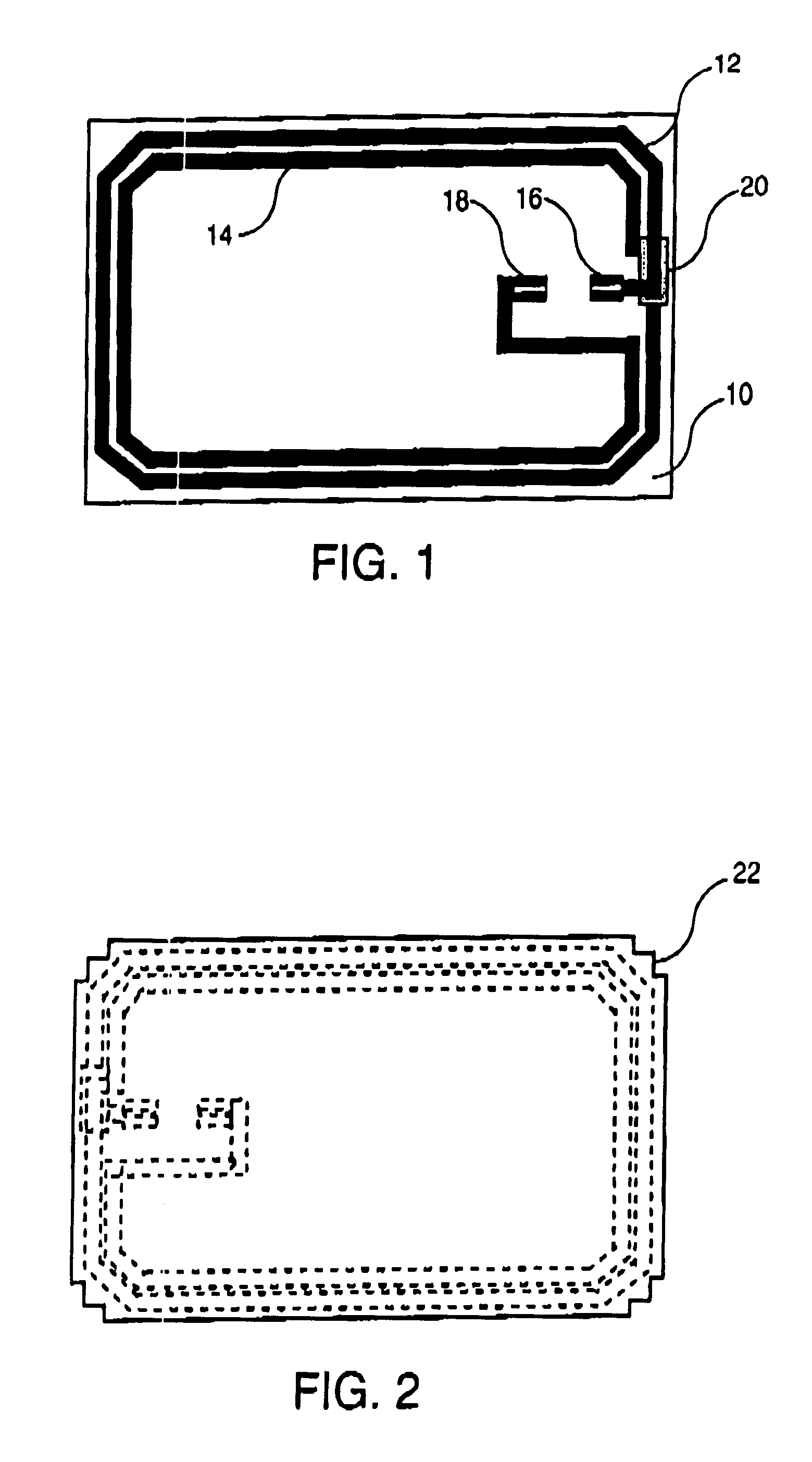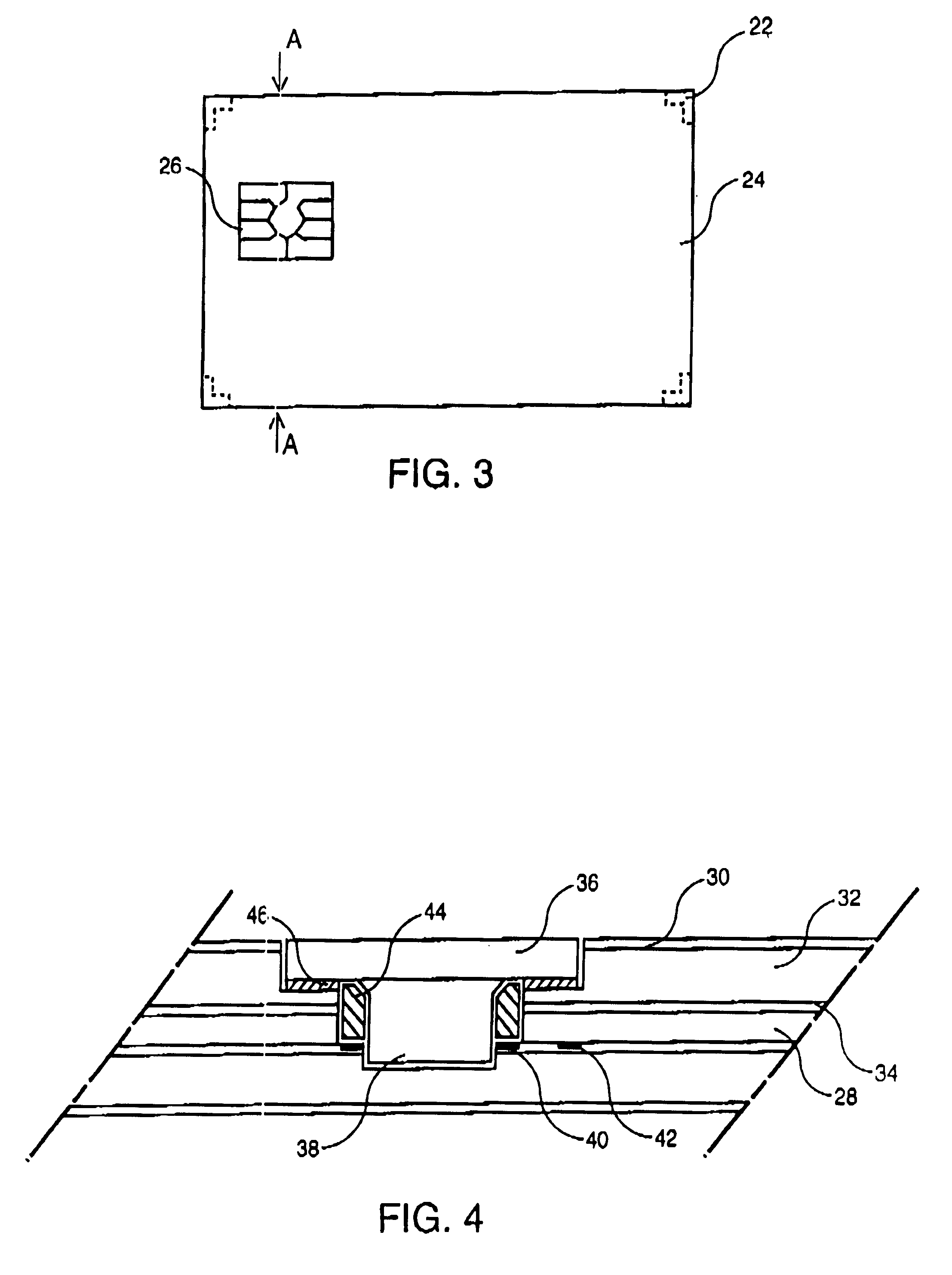Contactless or hybrid contact-contactless smart card designed to limit the risks of fraud
a smart card and contactless technology, applied in the field of contactless smart cards, can solve the problems of module-antenna or chip-antenna connection breaking, mediocre mechanical properties of monobloc cards in terms of restitution of absorbent stresses, and weak bonding joints
- Summary
- Abstract
- Description
- Claims
- Application Information
AI Technical Summary
Problems solved by technology
Method used
Image
Examples
Embodiment Construction
In FIG. 1, the smart card according to the invention consists of a paper support 10 on which an antenna is screen printed. The antenna consists of two turns 12 and 14, screen printed with an electrically conductive polymer ink, loaded with conductive elements such as silver, copper or carbon. One end of each turn is connected to one of the antenna contacts to the module which are also screen printed, turn 12 being connected to contact 16 and turn 14 to contact 18. The turns are interconnected by an electric bridge, most commonly referred to as the "cross-over" (not shown in the figure). An insulating strip of dielectric ink 20 is screen printed between the cross-over and turn 12. The antenna drawing is reversed in relation to the normal drawing of an antenna for an ISO format smart card. This special configuration provides a hybrid contact-contactless smart card with a cavity for housing the module, milled into the card body which is opposite the side of the support bearing the scre...
PUM
 Login to View More
Login to View More Abstract
Description
Claims
Application Information
 Login to View More
Login to View More - R&D
- Intellectual Property
- Life Sciences
- Materials
- Tech Scout
- Unparalleled Data Quality
- Higher Quality Content
- 60% Fewer Hallucinations
Browse by: Latest US Patents, China's latest patents, Technical Efficacy Thesaurus, Application Domain, Technology Topic, Popular Technical Reports.
© 2025 PatSnap. All rights reserved.Legal|Privacy policy|Modern Slavery Act Transparency Statement|Sitemap|About US| Contact US: help@patsnap.com



